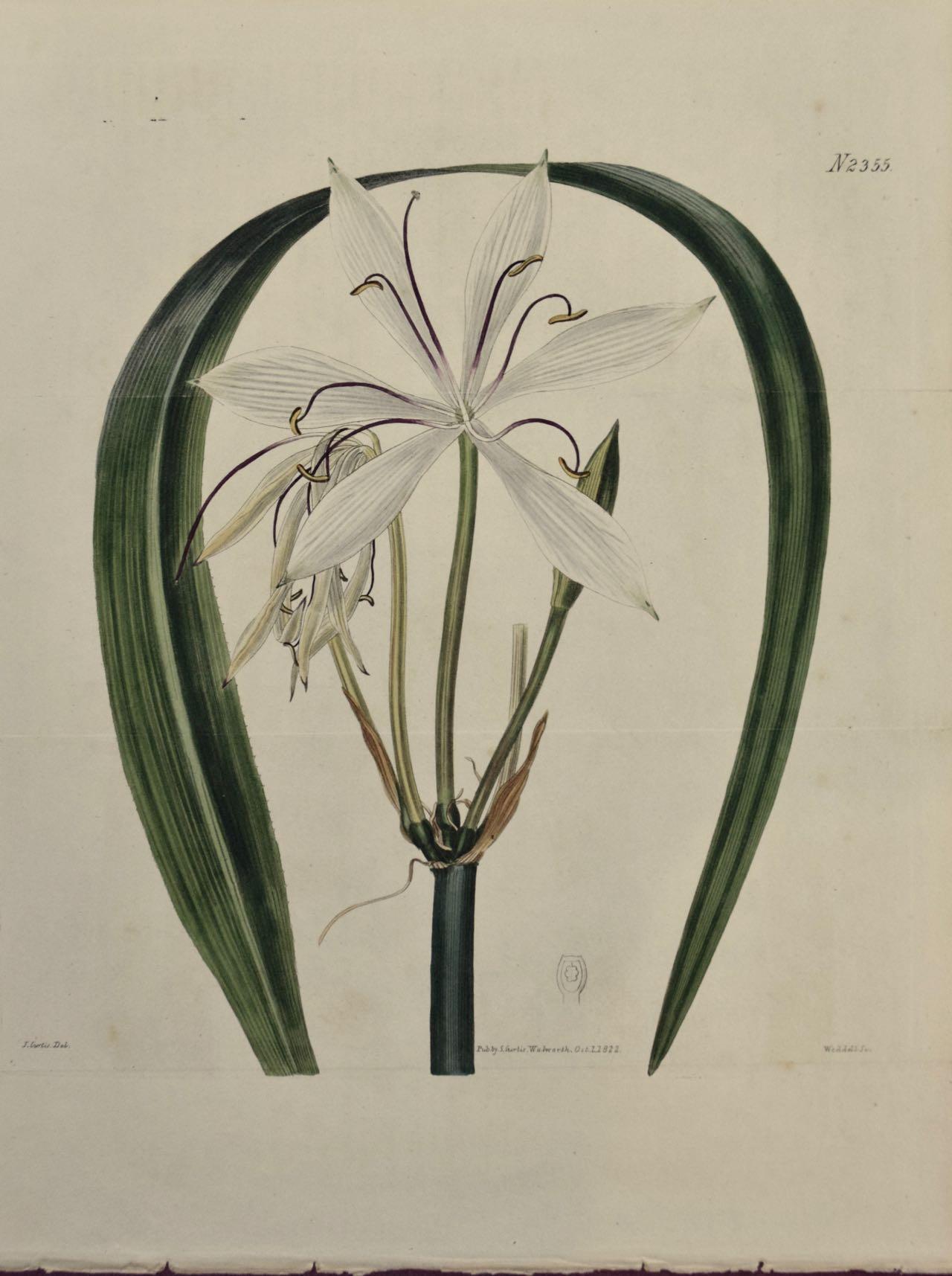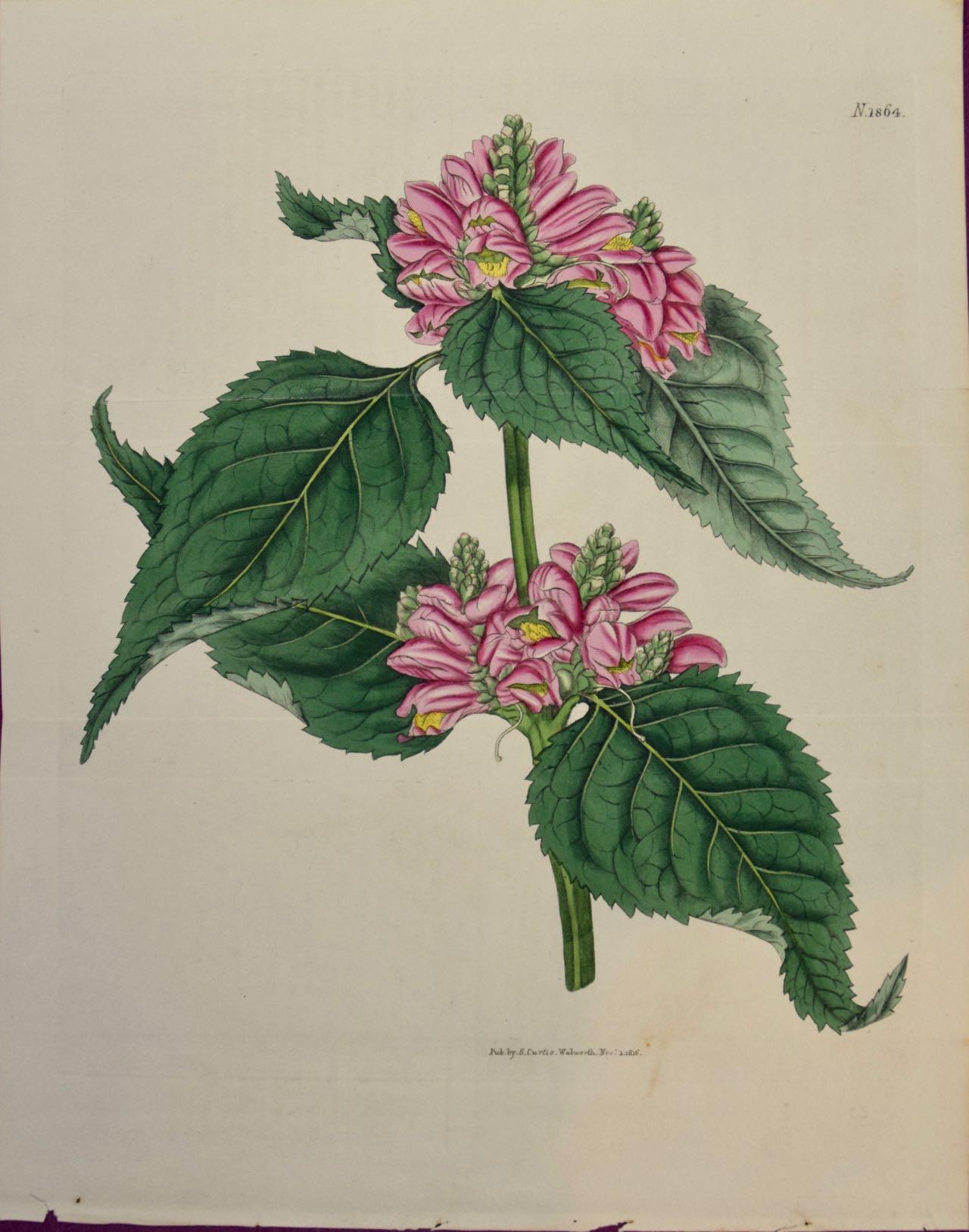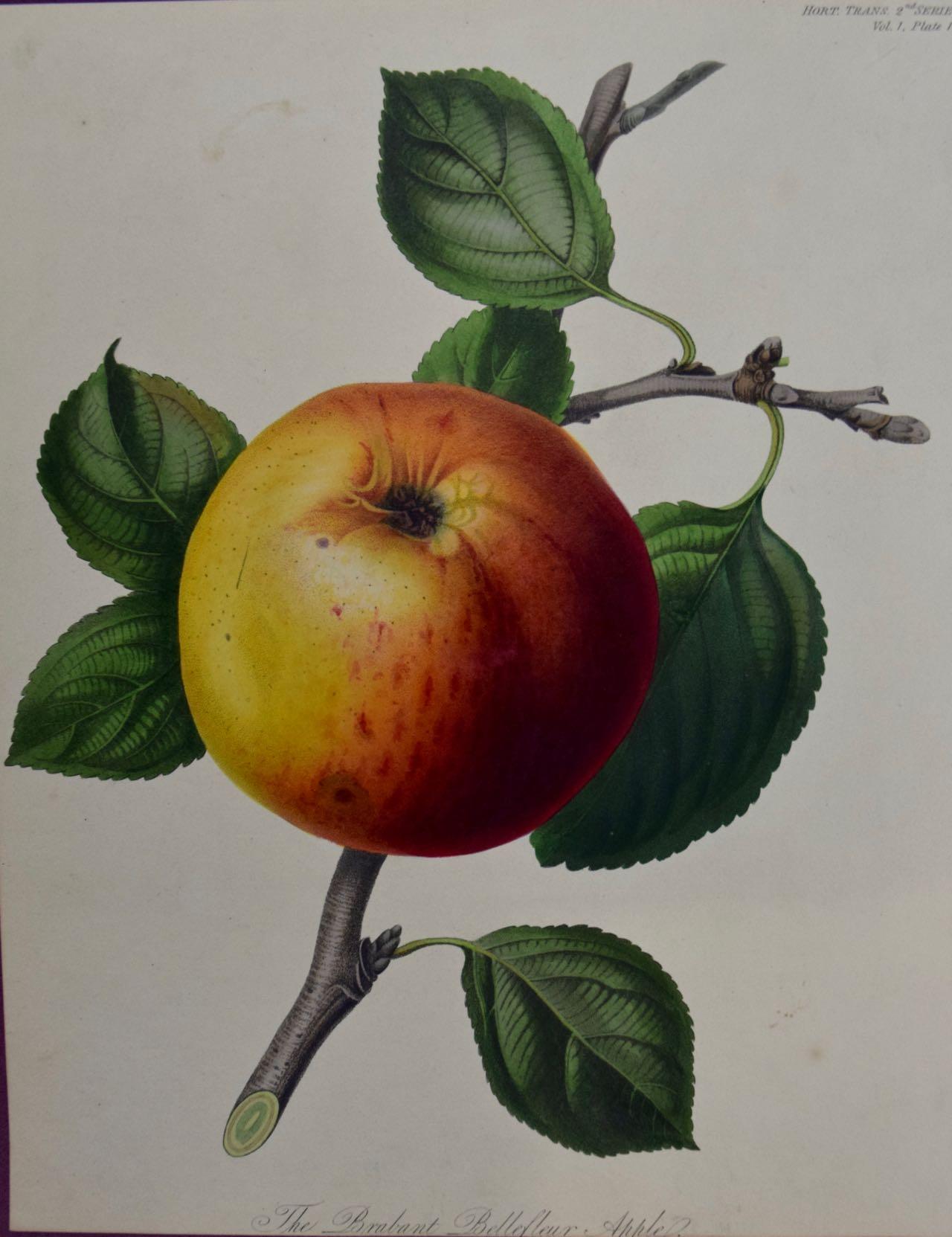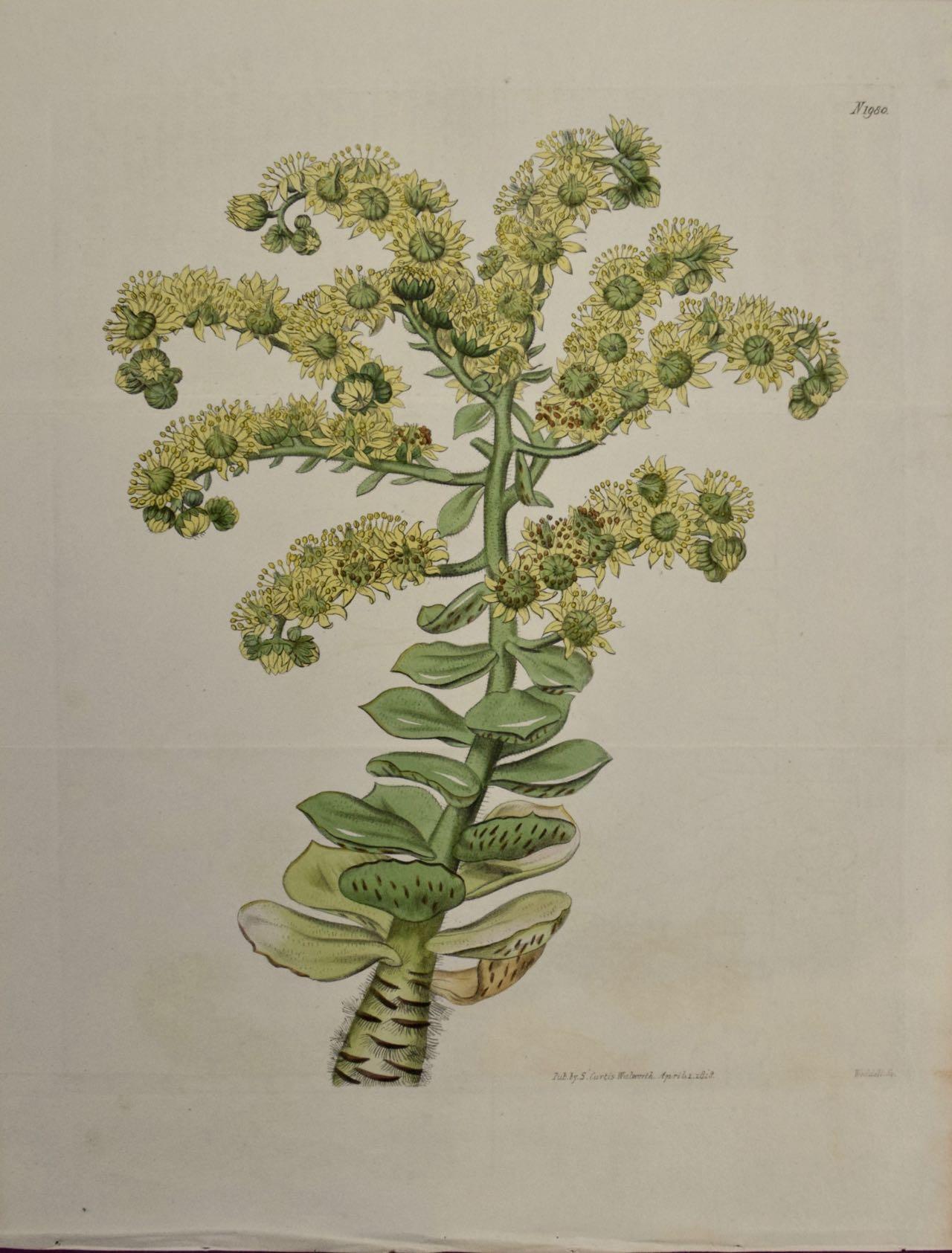Items Similar to "Mordon Colledge (the original spelling) Black Heath" from Universal Magazine
Want more images or videos?
Request additional images or videos from the seller
1 of 9
Unknown "Mordon Colledge (the original spelling) Black Heath" from Universal Magazine1751
1751
About the Item
This beautiful hand-colored copper-plate engraving entitled "The West Prospect of Mordon Colledge (Old English Spelling) Black Heath" was published in the 'The Universal Magazine of Knowledge and Pleasure' in London in 1751 by J. Hinton, at the Kings Arms St. Paul's Church Yard.
This engraving is presented in a beautiful polished burl wood frame with a cream-colored mat. It is glazed with TruVue conservation glass. The frame measures 13.5" x 17.63" x ,5". The print has vertical fold lines, but is in very good condition.
Morden College is a long-standing charity which has been providing residential care in Blackheath, south-east London, England for over 300 years. It was founded by philanthropist Sir John Morden in 1695 as a home for "poor Merchants... and such as have lost their Estates by accidents, dangers and perils of the seas or by any other accidents ways or means in their honest endeavours to get their living by means of Merchandizing." Morden College was built (to a design sometimes attributed to Sir Christopher Wren, but largely carried out by Edward Strong, his master mason) on the north-east corner of the Wricklemarsh estate. - Wikipedia
- Creation Year:1751
- Dimensions:Height: 13.5 in (34.29 cm)Width: 17.63 in (44.79 cm)Depth: 0.5 in (1.27 cm)
- Medium:
- Movement & Style:
- Period:
- Condition:
- Gallery Location:Alamo, CA
- Reference Number:
About the Seller
5.0
Gold Seller
These expertly vetted sellers are highly rated and consistently exceed customer expectations.
Established in 2011
1stDibs seller since 2019
242 sales on 1stDibs
Typical response time: 1 hour
- ShippingRetrieving quote...Ships From: Alamo, CA
- Return PolicyA return for this item may be initiated within 7 days of delivery.
More From This SellerView All
- Flowering Sea Onion: A 19th Century Hand-colored Engraving by William CurtisBy William CurtisLocated in Alamo, CAThis early 19th century hand-colored double fold-out botanical engraving is entitled "Ornithogalum Squilla" (Common Red-rooted Sea-Onion or Officinal Squill), plate 918, published in...Category
Early 1800s Naturalistic Still-life Prints
MaterialsEngraving
- Flowering Crinum Plant: A 19th C. Hand-colored Botanical Engraving by CurtisBy William CurtisLocated in Alamo, CAThis early 19th century hand-colored double fold-out botanical engraving is entitled "Crinum Arenarium" (Water-Island Sand Crinum), plate 2355, published in London in 1822 in William...Category
1820s Naturalistic Still-life Prints
MaterialsEngraving
- A 19th Century Curtis Hand-colored Engraving of a Flowering Clerodendrum PlantBy William CurtisLocated in Alamo, CAThis early 19th century hand-colored double fold-out botanical engraving is entitled "Clerodendrum Macrophyllum" (Broad-Leaved Clerodendrum), plate 2356, published in London in 1824 ...Category
1820s Naturalistic Still-life Prints
MaterialsEngraving
- Flowering Lyons' Chelone Botanical: A 19th C. Hand-colored Engraving by CurtisBy William CurtisLocated in Alamo, CAThis early 19th century hand-colored double fold-out botanical engraving is entitled "Chelone Major" (Flowering Lyons' Chelone plant), plate 1864, published in London in 1816 in Will...Category
1810s Naturalistic Still-life Prints
MaterialsEngraving
- Brabant Apple: A 19th Century Hand-colored Engraving by Augusta Innes WithersBy Augusta Innes WithersLocated in Alamo, CAThis early 19th century hand-colored stipple engraving by Augusta Innes Withers entitled "The Brabant Bellefleur Apple" was plate 10 published in London in the 'Transactions of the H...Category
1810s Naturalistic Still-life Prints
MaterialsEngraving
- Flowering Houseleek Plant: A 19th C. Hand-colored Botanical Engraving by CurtisBy William CurtisLocated in Alamo, CAThis early 19th century hand-colored double fold-out botanical engraving is entitled "Sempervivum Smithii" (Hispid-Stemmed Tree Houseleek), plate 1980, published in London in 1818 in...Category
1810s Naturalistic Still-life Prints
MaterialsEngraving
You May Also Like
- Group of Four Mezzotint Hunting Plates.By Johann Elias RidingerLocated in London, GB4 mezzotint engravings by and after Ridinger (c.55 x 43 cm.) with margins on all sides. [Published: Augsburg, 1750]. A fine group showing 2 male and 2 female hunters along with the ...Category
1750s Naturalistic Landscape Prints
MaterialsHandmade Paper, Engraving, Mezzotint
- Newstead in Nottinghamshire. Paul Sandby C18th landscape engravingBy Paul SandbyLocated in Melbourne, Victoria'Newstead in Nottinghamshire, the Seat of Lord Byron' Engraving by Thomas Malton after Paul Sandby (1731-1809). From Paul Sandby's 'The Virtuosi's Museum, Containing Select Views i...Category
18th Century Naturalistic Landscape Prints
MaterialsEngraving
- Vue d'une partie du Lac de Geneve, Switzerland, engraving, circa 1780Located in Melbourne, VictoriaFrench copper-line engraving depicting the Lake of Geneva, Switzerland. From 'The Scenery and Science of Switzerland illustrated', by Antoine Baron de Zurlauben (1720-1795) & Jean B...Category
1780s Naturalistic Landscape Prints
MaterialsEngraving
- "Coastal Ti Tree" Gums NSW Drypoint Etching in Ink on Paper No. 30/100Located in Soquel, CA"Coastal Ti Tree" Drypoint Etching in Ink on Paper No. 30/100 Detailed etching attributed to Ernest Edwin Abbot (British, 1888-1973). Several trees grow along the coast at the edge of the water at Ti Tree, Australia. In the far distance, a mountain range can be seen on the opposite shore. Titled and numbered "Coastal Ti Tree 30-100" in the left corner. Signed "G. Cope" in the right corner. Presented in a new black mat with foamcore backing. Mat size: 11"H x 14"W Paper size: 5.5"H x 10.25"W According to The Centre for Australian Art: Prints + Printmaking, Abbot often produced work under the pseudonym "G. Cope" Ernest Edwin Abbott was born in 1889 and grew up in Bideford United Kingdom, With his younger siblings Violet, Reginald, Olive and his parents Charles and Sarah Abbott, His Farther worked as a upholsterer. Abbott decided in 1911 to migrate to Western Australia on the ship Tainui, Settled in Western Australia he then married his wife Florence Radcliffe Olde in 1913 whom also came to Australia in 1912 from Bideford. They had two sons, Reginald Douglas Abbott and Kenneth John Abbott. They moved to South Australia where he taught art at Stott’s for four years. Later in 1920 the family moved to the suburb of Kew in Melbourne Victoria, where he took a studio in Oxford Chambers at 475 Bourke Street. He also built a studio later at his home in Black Rock. In about 1920 or 1930 he took up dry-point etching, and gave up his city studio to concentrate on printmaking at his home. Abbott made his own engraving tools...Category
Early 20th Century Naturalistic Landscape Prints
MaterialsPaper, Ink, Drypoint
- Representation Generale de la Voute de La Galerie du President, French engravingBy Charles DibdinLocated in Melbourne, VictoriaCopper-line engraving by Mathys Pool (1676-1732) after Picart and Charles Le Brun (1619-1690). 1718. Depicts a ceiling design commissioned for the Hot...Category
Early 19th Century Naturalistic Landscape Prints
MaterialsEngraving
- 'Vue des Montagnes du Val-Travers, Neuchatel, Switzerland, engraving, 1780Located in Melbourne, Victoria'Vue des Montagnes du Val-Travers, d'ou aperçoit le Lac de Neuchatel' French copper-line engraving by Duparc after Claude Louis Chatelet (1753-1794). From 'Th...Category
1780s Naturalistic Landscape Prints
MaterialsEngraving
Recently Viewed
View AllMore Ways To Browse
Black Kings
Yard Long Prints
Antique Yard Art
Burl Framed Art
English Copper Measures
English Mason
Antique Spelling
Antique St Christopher
Sir Christopher
Antique Yard Long
Church Yard
Christopher Wren
English Kings Prints
Sir Christopher Wren
Black Heath Antique
Donna Aldridge
Eduard Bargheer On Sale
Eileen Seitz Beyond Earth Beauty





